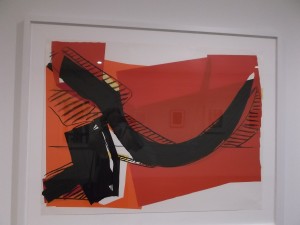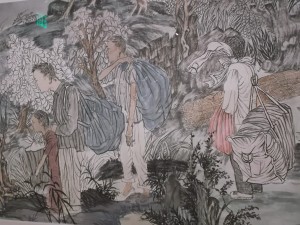My department here at UMass has scheduled a series of lunch time talks about topics in Information Technology; they cover a diverse range of subjects and they all sound pretty interesting. Today’s talk was titled “Women in Technology Careers at ESPN” and who wouldn’t want to hear about that? Women, technology, sports TV! I didn’t have to be urged to attend and joined about 40 others in the Campus Center for the panel discussion starting at 1 pm.
The five panelists introduced themselves and talked a bit about their work and how they ended up in their current jobs at ESPN, which is headquartered in Bristol, south of us in the Connecticut River Valley. They spoke in this order:
- Diane Larivee, Associate Director of Data Center Services
- Jessica Dang, Portfolio Coordinator
- Farhanah Sheets, Software Engineer II
- Maureen Barend, Associate Director of Transmission
- Maura Maloney, Principal Technology Business Operations Analyst
For you non-sports fanatics out there, ESPN, the Entertainment and Sports Programming Network, a global cable and satellite television channel, was founded by two Connecticut businessmen in 1978; their first broadcast was September 1979. Since that time, and in an often rocky journey to profitability, the company has grown tremendously; it is currently a joint venture between the Disney Company, which owns 80%, and the Hearst Corporation, which owns the rest. In addition to the flagship channel and its seven related channels in the United States, ESPN broadcasts in more than 200 countries worldwide.
Diane began her career as an Electronics Technician in the US Navy, serving in Guam. She became interested in routing and switching and in subsequent jobs worked in the financial industry, in health care, and in insurance. She has become an expert in network forensics and is still excited about the nitty-gritty of communications, of data moving across the wires.
Jessica graduated with a degree in Psychology in 2013. She worked first for Teach for America, then as a volunteer for a Yale project on emotional intelligence. She came to ESPN via an internship at Disney. For her, an ideal job combines working with both technology and people.
Farhana was mentored by her brother, a classic computer nerd; she started working with computers in high school, though she said it never occurred to her that she would make a career out of it. In college, she began as a business major but then switched to Computer Science, graduating in 2011. Prior to landing at ESPN, she worked for an automation company in North Carolina. She loves the logic of programming.
Maureen hails from California, where she spent 20 years in the broadcast news business in San Francisco working at KRON-TV and KGO-TV/ABC, and yes, in the early years, she was often the lone female in a male-dominated field. She loves the excitement of the rapidly changing technology and entertainment world.
Maura has come home again: she graduated from UMass-Amherst with a degree in Electrical Engineering in 1985. While a student here, she fell in love with television while working in the Video Instructional Program. She was hired in 1991 by ESPN as an engineer in the Transmission Department. In 2000, she was promoted to manage both the Network Traffic and Transmission departments. Currently, she is a Principal Analyst in the Technology Business Operations Department, supporting ESPN’s Technology Division.
The presentation was quite lively, as we were treated to some short video clips and also were encouraged to jump right in with questions to the panelists. I found myself wishing I could have heard about these kinds of opportunities when I was trying to find my way toward a satisfying career. I understand that there are drawbacks to working for a global company whose operations are 24×7, with a constant sense of urgency, but I can also understand how someone could get hooked on the excitement of developing and using cutting-edge technology and reaching millions of people. The panelists also emphasized that at ESPN headquarters, the atmosphere is welcoming and open, with employees willing to help and teach each other.


